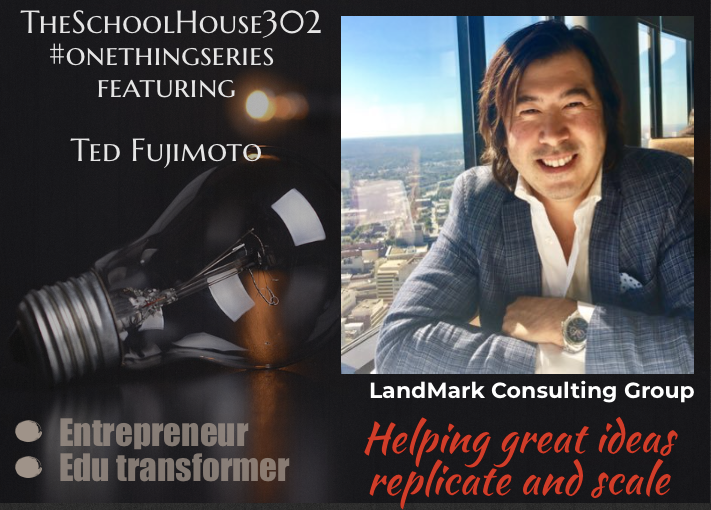
Teamwork for School Leaders

Everybody says that teamwork makes the dream work. What a cliché, right? Well, not so much. It’s true. In fact, the only way to make the dream work is through team work. It reminds us of two things that great leaders do: 1. Great leaders communicate a dream. Without a vision for the future, the best team in the world cannot reap the benefits of working together. 2. Teams are not formed, organized, or managed by accident. Great leaders work on their team.
But, we don’t want to take for granted that your vision (or dream) is clear, and we don’t want to downplay that its a skill to assemble a team. We address the need for a clear and compelling vision and how school leaders can build a better team in our book, Building a Winning Team. For now, let’s dive deeper into the work that your team needs to do to be prepared for uncertainty, share a clear vision, collaborate for success, take advantage of synergy, and build trust.
The following is a five-point model that we created for school leaders. The model includes what we consider to be the critical aspects needed for teams to succeed and achieve, whether that be on the field, in the boardroom, or in life:

#1. Prior Preparation
There is no secrets to success. It is the result of preparation, hard work, and learning from failure. ~ Colin Powell
There’s probably nothing more important than teams spending time together, preparing and creating the right game plan to win when the stakes are high. Solidly prepared teams are the ones that are ready to overcome obstacles as they present themselves, and when teams are pursuing their goals and tackling tough issues, obstacles are a given. It’s also preparation that allows teams to snap back after experiencing failed scenarios.
Practical Advice: Using a specified thinking process can help with the preparedness of your team to tackle big problems. For example, systems thinking allows for ideation and iteration so that teams realize that each time they develop a solution they understand that it’s really only an incremental improvement and not the end result. Systems thinking also promotes the development of questions over the creation of answers, which allows teams to dig deep into the problem to uncover the interdependent parts of something that might otherwise appear very complicated.
#2. Shared Vision
Vision is the art of seeing what is invisible to others. ~ Jonathan Swift
For successful teams to win, regardless as to whether it is a corporation, a school, or an athletic club, they must be led by a shared vision–a clear destination of where they are heading. The problem is that this term vision is overused, misunderstood, and often nothing more than a superficial slogan created during a workshop. And, a vision can also be blurred by objectives and activities that don’t appear to be aligned to it or when no one really bought into it in the first place. Despite the reality of ambiguous vision statements in many organizations, a clear, concise, and powerful vision always serves as the heart of a winning team. Keeping the vision simple with a clear communication of the WHY allows for an extreme focus that drives success.
Practical Advice: The result of a clear vision is actually freedom. Each individual within a team serves a specific and fundamental role whereby a clear vision allows individuals to thrive within their own “space” as long as they are heading in the right direction. The vision is not only the call-to-action, it’s also the ultimate unifier in terms of bringing people together even when their work might be done individually. Never take for granted that your vision is clear. Take the advice from one of our expert guest and assume that everyone is actually confused.
#3. Collaborative Spirit
Alone we can do so little; together we can do so much. ~ Helen Keller
Great teams work together harmoniously and ultimately become incredibly productive. Collaboration alone is not enough, though. Teams must have a spirit, a mindset and belief, that when we come together, better things happen. This spirit embaces Covey’s Habit #5, seek first to understand, then to be understood. A critical aspect of high performing teams is for the members of the team to truly understand each other. It takes a deliberate focus on listening first, and providing feedback to others only once you know the true nature of their context.
Practical Advice: Collaboration is not something the leader can simply mandate and expect teams to do. Take time to actually develop team collaboration through specific exercises and activities. Lencioni’s Five Dysfunctions of a Team is a great book to use for professional development. The absence of trust section is especially powerful for teams to learn how to trust one another and give each other the benefit of the doubt, particularly during challenging times.
#4. Synergized Efforts
Synergy is better than my way or your way. It’s our way. ~ Stephen Covey
Synergy is the byproduct of a collaborative spirit. When school and district leadership teams truly produce, it’s always an outcome with a combined effect that is greater than the sum of what the separate efforts of those on the team could have created individually. The result of a synergized team is something that no one person could have imagined without the collective efforts of the contributors. “When you communicate synergistically, you are simply opening your mind and heart and expressions to new possibilities, new alternatives, new options.”
Practical Advice: In order for collaboration to be a strong part of the team dynamic and for everyone to experience synergy, individuals must find their own work meaningful and purposeful. Take time as the leader to ensure each individual is engaged by letting them know how she is contributing to the overall success of the team. This can be as simple as a “hello” and “thank you” with the specifics of your appreciation and how it’s connected to the big picture.
#5. Strong Trust
If you want to lift yourself up, lift someone else. ~ Booker T. Washington
Build trust first before expecting an outcome from the team. Leaders build trust on teams with very explicit behaviors that they can both demonstrate as the leader and teach to the members of the team. The first way to build trust is to simply and clearly signal that you have trust and that you have confidence in every member of the team. Signaling trust means giving up control to the team and sharing the information that the team needs to work effectively toward the goal. When teams have the information and control necessary to take risks, they produce outcomes that are new and different than what they would have with constraints.
Practical Advice: Be upfront. Relationships, whether personal or professional, are based on trust, and if someone believes the other person is holding out, or not telling the truth, relationships are damaged. Of course there are levels of confidentiality, but we are referring to surprises, withholding unnecessary information, or seeking opinions when you know you’re not going to use the person’s advice. Being transparent and direct is always better than holding back or acting in a passive way toward the team. When you don’t trust your team, you can begin to micromanage them, which is the worst thing that any leader can do when the goal is a strong team.
That’s our model for teamwork. When your team comes together with prior preparation, a shared vision, a collaborative spirit, synergized efforts, and a strong trust, you can accomplish almost anything. If your team needs strengthening, contact us, we can help–keynotes, 1:1 coaching, professional learning, retreats, masterminds. We’re helping school and districts all across the country; we would love to join yours.
Let us know what you think with a like, follow, or comment. Find us on Twitter, YouTube, iTunes, Facebook, SoundCould, and more. And if you want more simple models for leading better and growing faster, follow this blog by entering your email at the top right of the screen.
TheSchoolHouse302 is about getting to simple by maximizing effective research-based strategies that empower individuals to lead better and grow faster.



 7 Mindshifts for School Leaders: Finding New Ways to Think About Old Problems.
7 Mindshifts for School Leaders: Finding New Ways to Think About Old Problems. 


